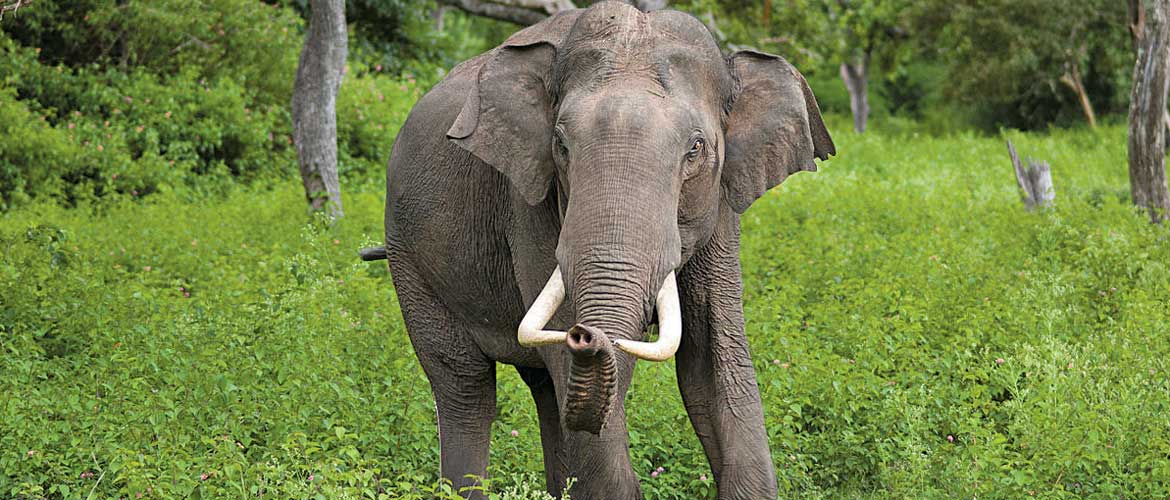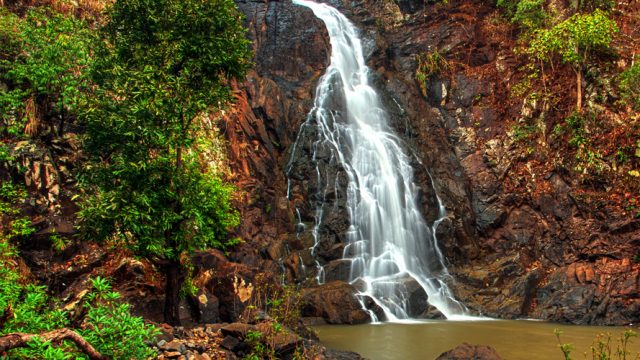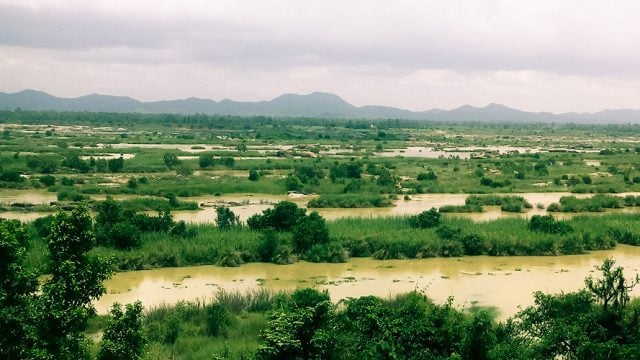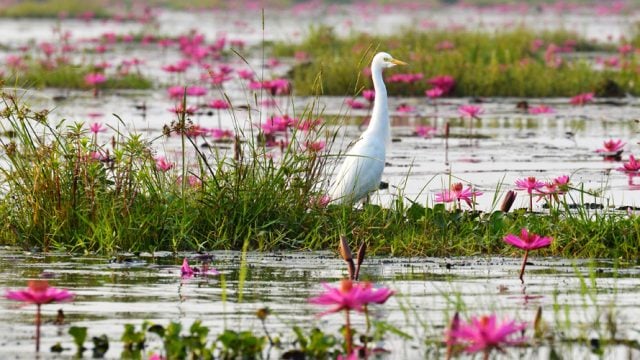Odisha is a diverse habitat of forests, rivers, grass-lands, marshes and beaches. Crocodiles lurk in
Besides the numerous wildlife sanctuaries, there are several places where you can enjoy the natural world and its creatures – Indira Gandhi Mini Zoo at Rourkela, Kapilas Mini Zoo in Dhenkanal and Motijharan Zoo in Sambalpur. There are many deer parks across the length and breadth of Odisha too – at Cuttack, Harishankar in Balangir district, Gandhamardana at Nrusinghanath in Bargarh district, Papadahandi in Nabarangapur district, Sunabeda in Koraput district, Taptapani in Gajapati district, Bhanja Vihar in Ganjam district, Nisanga at Chandipur in Balasore district, and Kuanria in Nayagarh.

Balukhand-Konark Wildlife Sanctuary
Located 70km from Bhubaneswar, this is a small 72-sq km sanctuary along the Bay of Bengal between Puri and Konark, with sandy tracts of cashew and casuarina trees. The Kushabhadra and Nuanai rivers pass through the sanctuary. Its star attraction is the blackbuck, besides the striped hyena, jackal, jungle cat and spotted deer.
Chandaka Dampara Elephant Sanctuary
Located on the northeastern limits of the Eastern Ghats only 20km from Bhubaneswar, this is the only wildlife preserve in Odisha solely dedicated to the elephant. Spread over 193.39sq km across Khurda and Cuttack districts, the sanctuary has several watchtowers for wildlife viewing and remnants of old forts. Enter from the main gate at Godibari, stay overnight in forest rest houses and spot elephants from the Bharatpur watchtower, besides deer, sloth bears, hyenas, jackals, reptiles and birds. Kumarkhunti, a man-made reservoir, which is being developed as a heronry (a breeding colony of herons), has waterfowl in the thousands.

Debrigarh Wildlife Sanctuary
Fringed by the Hirakud Reservoir and the Barapahad hills of Bargarh district, the Debrigarh Sanctuary is 40km from Sambalpur. Spread over 346.91sq km, Debrigarh is rich in both terrestrial and aquatic flora and fauna. It supports a good population of tigers, leopards, bison, hyenas, sambar deer and chousingha (the four-horned antelope), besides 41 species of reptiles and 234 species of birds. In the summer, animals flock to the reservoir, while in winter, you can spot migratory birds.
Hadagarh Wildlife Sanctuary
Situated in the Keonjhar district of northeast Odisha, the verdant Hadagarh Wildlife Sanctuary, spread over an area of 191.06sq km, is linked to the Similipal Tiger Reserve and Kuladiha Wildlife Sanctuary nearby. Its location in the catchment area of the Salandi River and numerous streams, and the presence of the Hadagarh Reservoir, make it an important wetland area. A plethora of resident and migratory water birds flock to the dam site. The sanctuary is a good place to spot mugger (crocodile), while the dense sal forests abound with animals such as leopards, dhole (wild dogs) and elephants.

Karlapat Wildlife Sanctuary
It is believed that the area of this sanctuary was once so rich in tigers, they began calling it karla pat after the striped leaf of the bitter gourd. The 147.66sq-km sanctuary, 35km from Bhawanipatna, is still home to leopards, elephants, sambar deer and gaur. Just 5km from the park gate is the Phurli Jharan Waterfall, while the Jacom Forest Guest House by the Karlapat River is a good spot for birdwatching.
Kotagarh/ Kotagad Wildlife Sanctuary
Situated southwest of Baliguda in Kandhamal district, Kotagarh spans nearly 400sq km. There are various entry points to the sanctuary – Tumudibandha from the north and Kotagarh from south, Belghar from the west and Subarnapur from the east. Surrounded by mustard fields, forests of mahogany and sal, and hamlets of the Kutia and Desia kondh tribes, Kotagarh is rich in wildlife – you will be able to spot elephants, sambar deer, leopards, gaur, spotted deer and reptiles here. Ludu Waterfall near Subarnapur is a good excursion.
Khalasuni Wildlife Sanctuary
This 116sq-km sanctuary lies in Rairakhol sub-division of Sambalpur. The altitudinal variation of 223m to 750m gives Khalasuni great diversity of avian life and reptiles. You can spot peafowl, jungle fowl and hornbill here besides the tiger, leopard, gaur, elephant and lots of deer species including mouse, barking, sambar and spotted deer.
Kuldiha Wildlife Sanctuary
Kuldiha is a pristine sanctuary in the Balasore district linked to Simlipal through the Sukhupata and Nato hill ranges. Forest permits can be obtained from the range office at Nilagiri. The forest rest house at Kuldiha, with an artificial salt lick nearby, is a good spot for wildlife sightings. Elephants, bison, deer and wild cats are present in the sanctuary. The other forest rest house at Jodachua is remote. Risia Dam at the sanctuary’s northwest edge is great for birdwatching.
Lakhari Valley Sanctuary
A relatively small wildlife zone of 118sq km in Gajapati district of South Odisha, the Lakhari Valley Sanctuary is accessed from Chandragiri, a small hamlet on SH34, which has a forest office and acts as a gateway into the sanctuary. The single range comprises Chandragiri, Chandiput and Bhismagiri sections, with headquarters at Podamari. You can stay in the Chandragiri Forest Rest House and go on a birdwatching trail through the valley via Talabanda, Kamrakhali and Baliganda to Manikpur.
Sunabeda Wildlife Sanctuary
A proposed tiger reserve, the 500sq-km Sunabeda Wildlife Sanctuary in Nuapada district has diverse wildlife habitats, with a vast plateau, canyons and nearly a dozen streams and waterfalls. Located in the catchment area of the Jonk River and adjoining Chhattisgarh, the sanctuary is a great spot for sighting swamp deer and wild water buffalo, besides sambar deer, wild boar, leopard and even the tiger.
Ushakothi Wildlife Sanctuary
Primarily a dry deciduous forest of sal, sandalwood, neem and arjuna and spanning an area of 304.03sq km, the Ushakothi Wildlife Sanctuary lies east of the Hirakud Dam. The park has a healthy population of elephant, tiger and gaur.
wildlife
India
National Parks





